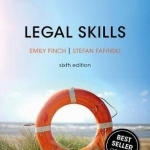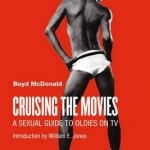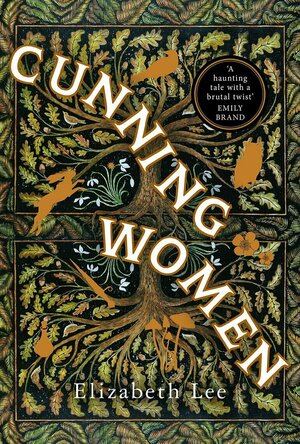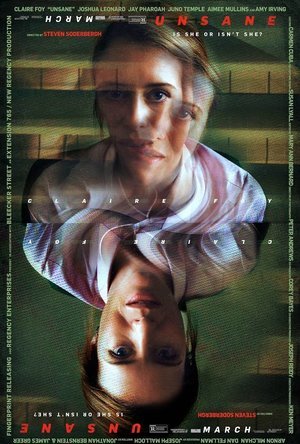
Legal Skills
Emily Finch and Stefan Fafinski
Book
The best-selling legal skills textbook in the market, Legal Skills is the essential guide for law...

Strategic Planning for Law Firms: A Practical Roadmap
Book
We don't have to tell you that strategy is critical if you want to achieve differentiation,...

The Financial Times Guide to Options: The Plain and Simple Guide to Successful Strategies
Book
The Financial Times Guide to Options, will introduce you to the instruments and markets of options,...
ClareR (6054 KP) rated Cunning Women in Books
May 15, 2021
I’m on a bit of a 17th century bender at the moment, and witches seem to crop up frequently. Basically, if you were female, didn’t have a man about the place (preferably one you were married to) and knew things other than washing, cleaning and popping out babies, you risked being accused of witchcraft. Add to that a birthmark, and/ or an opinion or two, AND not going to church regularly, then you might as well start picking your own stake out.
Sarah and her mother, brother and little sister, all live in a hamlet abandoned after all the inhabitants died of plague, known as the Plague Village. They have no money and little income after the death of Sarah’s father, and what money they do have comes from selling potions, small spells and begging. They’re outcasts, and there’s an atmosphere of dank, dark poverty in where they live and what they wear. They are avoided by pretty much everyone in the village - it seems to be a really lonely existence.
Then comes a spark of hope when Sarah meets the local farmer’s son, Daniel. He lives a very different life: one of open spaces, plenty of food, light and comfort. He’s treated poorly by his father and a farm hand, but he’s never hungry, and his living conditions are so much better than those of the Haworth family.
This is a story that feels so raw and real. You just know that it’s not going to be a happy ending. How can it? DOn’t get me wrong - I rather like endings that are unresolved or just plain unpleasant (weird, I know), but the youth of these protagonists had me hoping throughout for a better life for them.
Ahh, the 17th century - great to read about, but I’ve never been so glad to have been born in the 1970’s!
This is a really enjoyable, heartfelt historical fiction novel, and I’m so pleased that I got the chance to read it. Many thanks to Windmill Books for providing me with an e-arc through NetGalley.

The Free-from Food for Family and Friends: Over a Hundred Delicious Recipes, All Gluten-free, Dairy-free and Egg-free
Book
100% free from gluten, dairy, eggs, soy and yeast. More simple and healthy recipes from The...

Cruising the Movies: A Sexual Guide to Oldies on TV
William E. Jones and Boyd McDonald
Book
Ronnie Reagan's bizarre legs are sufficient reason to watch John Loves Mary (1949), a picture so...
Jonathan Higgs recommended Sgt. Pepper's Lonely Hearts Club Band by The Beatles in Music (curated)
Emma @ The Movies (1786 KP) rated Unsane (2018) in Movies
Sep 25, 2019
I really was torn about going to see this one. Part of me thought that I would come out entirely paranoid with ideas racing around my head that every one was out to get me. But I needn't have worried. I actually came out rather bored. My Fitbit agreed and actually registered me as asleep for an hour of it
First off, Claire Foy did do an amazing job. Regardless of how I found the movie itself she was probably the reason I managed to stay through it.
I was surprised how much I wanted to leave. I was creating shopping lists in my head. Wondering how on earth you move to another state to escape your stalker, but don't change your name. I was trying to fathom how Sawyer would willingly throw away another human life, even of a woman who had been tormenting her. I wondered a lot of things during, and about, this film.
Some films make me jumpy. While debating whether to attend the showing I was considering the fact that I'd be jumping out of my seat and scaring the life out of the person next to me. In the end this wasn't something that I even had to consider. I was left a little amazed that the trailer had managed to create this feeling of fear in me, yet the whole film left me feeling... nothing.
What disappoints me about this movie the most is that the story line left me so cold that I really felt that the ingenuity of filming it on an iPhone was completely lost. While the occasional Blair Witch-esque movements annoyed me you wouldn't have known that what you were watching was anything other than a "traditionally" filmed movie. At this point I think I'd be more excited about seeing a documentary about how it was made than how I felt about the actual film.

Virgin Mobile UAE
Utilities
App
Hello UAE… Here at Virgin Mobile UAE, we’re all about giving our customers an all-around...

Battery Doc - Professional Care and Information
Productivity and Utilities
App
Providing useful and relevant data revolving around battery health and general device information on...


